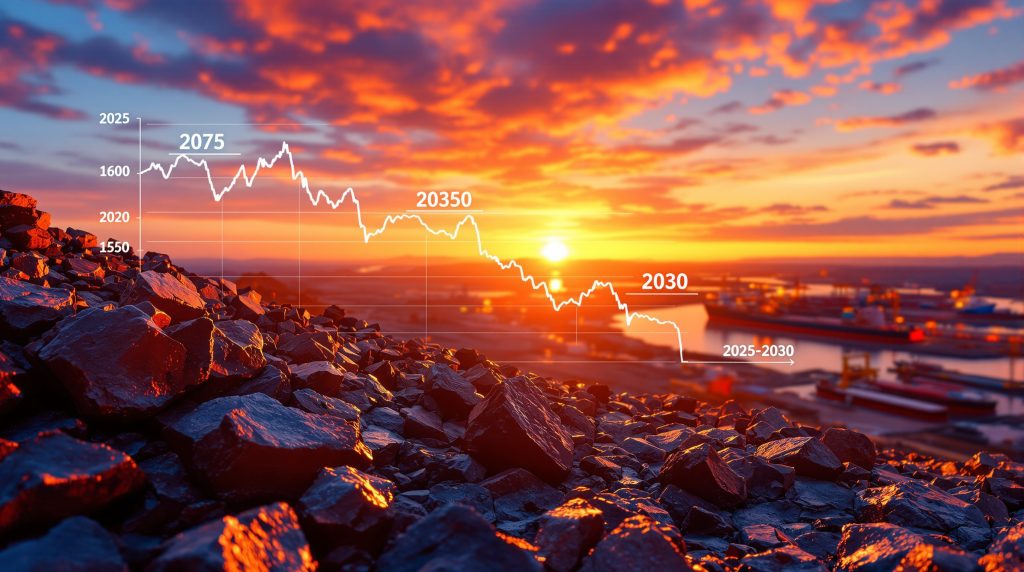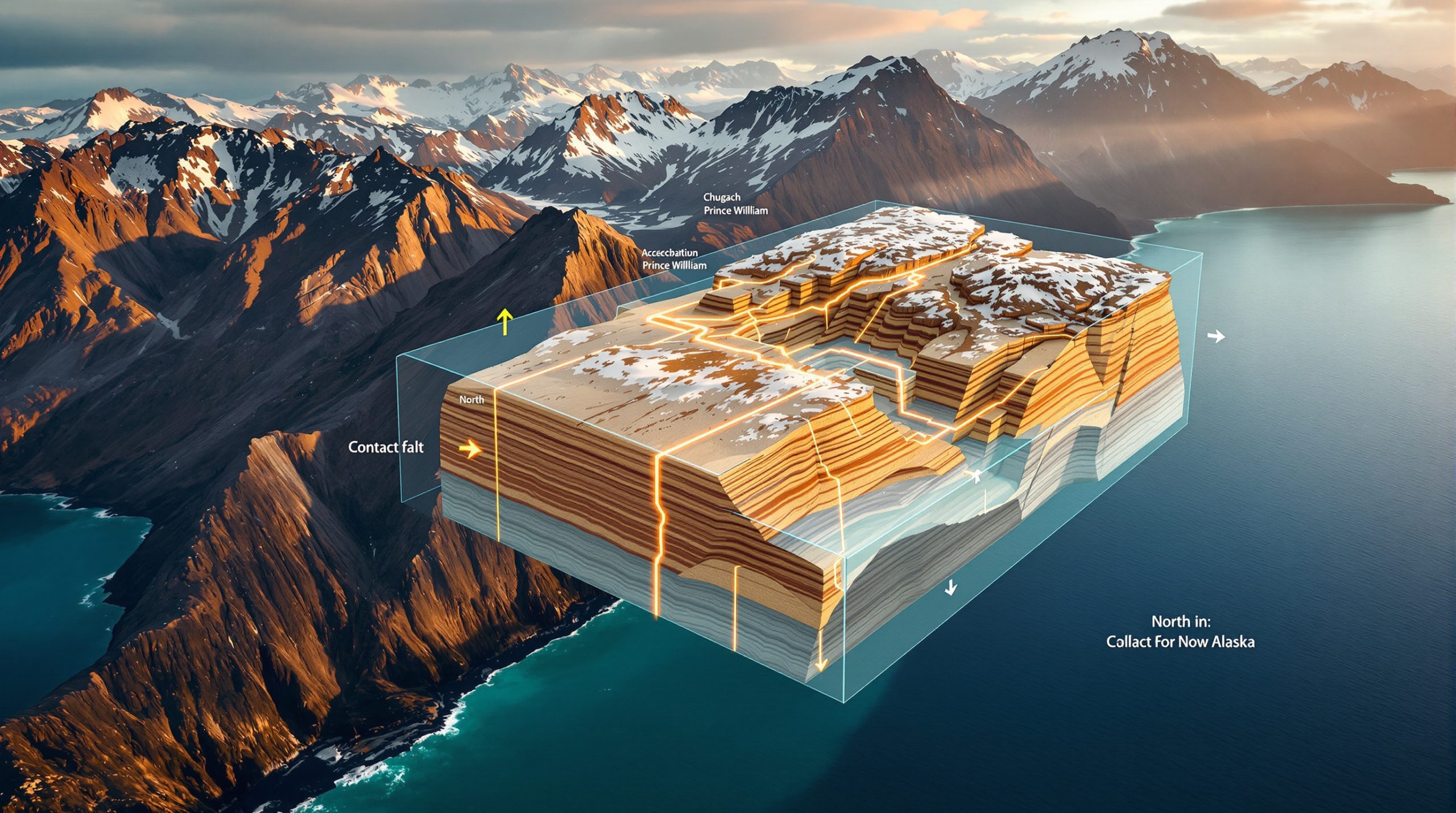Iron Ore Price Forecast: Market Trends and Projections Through 2030
Iron ore markets have shown resilience in recent months, with benchmark prices maintaining strength despite underlying structural challenges. Current market indicators suggest a complex interplay of short-term supports and longer-term headwinds that will shape pricing trajectories through 2030.
How Are Iron Ore Prices Expected to Trend in the Near Term?
Current Market Dynamics Driving Short-Term Pricing
Iron ore price trends have demonstrated notable stability recently, with benchmark prices hovering around $102 per metric ton as of September 2025. The most-traded January iron ore contract on China's Dalian Commodity Exchange closed 0.71% higher at 777 yuan ($108.63) per ton, while the benchmark October iron ore on Singapore Exchange edged up 0.39% to $102.85 per ton in early trading.
This price resilience comes despite mixed fundamental signals, suggesting that market sentiment and technical factors are currently providing support to valuations. Goldman Sachs recently revised its Q4 2025 average price forecast upward to $95 per metric ton from its previous $90 per ton projection, indicating improved confidence in near-term market conditions.
Key Factors Influencing 2025-2026 Price Movements
Several critical elements are shaping iron ore pricing through the remainder of 2025 and into 2026:
Production restrictions in key regions: Temporary output limitations in major production hubs like Tangshan, China have temporarily supported prices. Steelmakers in this crucial production center have been required to curb operations to ensure better air quality for a military parade in Beijing, creating artificial supply tightness in the market.
Supply-demand rebalancing challenges: While prices have shown resilience, market analysts at First Futures have noted that underlying iron ore demand has not shown substantive improvement, creating potential downside risks once temporary production constraints are lifted.
Investor sentiment shifts: The modest price gains in recent weeks reflect improving global financial conditions rather than strengthening physical demand fundamentals. This disconnect between prices and underlying consumption patterns suggests potential volatility ahead.
Seasonal demand patterns: Iron ore consumption is expected to increase following the removal of production restrictions after September 4, 2025, which could provide temporary price support before structural factors reassert downward pressure.
What's Driving the Long-Term Iron Ore Price Outlook?
Structural Supply-Demand Imbalance
The medium to long-term outlook for iron ore points toward a gradual price decline as fundamental market imbalances become increasingly influential:
Chinese steel consumption trajectory: Wood Mackenzie forecasts Chinese steel demand will decline by 5-7 million tons annually over the next decade. As China represents approximately 70% of global seaborne iron ore demand, this projected consumption decline represents a significant headwind for future pricing.
New production capacity: Several major iron ore projects are expected to come online in the coming years, substantially increasing global supply. These include expansions in Australia's Pilbara region and the phased development of Guinea's Simandou deposits, which collectively will create persistent downward price pressure.
Shifting industrial priorities: Environmental regulations and decarbonization efforts across major steel-producing regions are altering production methods and input requirements. These transitions generally favor higher-grade iron ore products while potentially reducing overall volume demand.
Projected Price Path Through 2030
Market consensus indicates a steady downward trajectory for iron ore prices, albeit with periodic volatility:
| Year | Projected Average Price ($/ton) | Price Range ($/ton) | Key Market Drivers |
|---|---|---|---|
| 2025 | $95-100 | $90-105 | Production restrictions, modest demand recovery |
| 2026 | $90-95 | $85-100 | New supply coming online, slowing Chinese construction |
| 2027 | $85-90 | $78-95 | Supply growth outpacing demand, industrial transition |
| 2028 | $82-87 | $75-92 | Structural oversupply conditions developing |
| 2029 | $80-85 | $73-90 | Long-term demand adjustments, quality premiums widening |
| 2030 | $78-83 | $70-88 | New market equilibrium, sustainable production economics |
Goldman Sachs maintains its 2025 price forecast at $80 per ton, aligning with the consensus expectation of moderating prices over the medium term. This projection balances the anticipated excess supply against cost-support levels that become increasingly relevant as prices decline.
How Will Regional Factors Impact Iron Ore Markets?
China's Evolving Role in Global Iron Ore Demand
China's position as the dominant consumer of iron ore is undergoing significant transformation, with several factors reshaping its influence on global markets:
Construction sector recalibration: The ongoing adjustments in China's property market continue to affect steel demand projections. The real estate sector, traditionally a major steel consumer, faces persistent challenges that have structural implications for iron ore requirements.
Industrial policy shifts: Government initiatives aimed at reducing carbon emissions and addressing excess steel capacity are fundamentally altering consumption patterns. These policies favor efficiency over volume growth, with implications for both quantity and quality specifications of iron ore imports.
Production hub dynamics: Regions like Tangshan remain critical to China's steel output and consequently iron ore demand. Regional production policies, environmental regulations, and capacity rationalization efforts will continue to drive short-term market volatility while shaping longer-term consumption trends.
Australia's Supply Position and Market Influence
As the world's largest iron ore mines exporter, Australia's production outlook significantly impacts global pricing dynamics:
Operational stability: The major Australian producers have established reliable operational track records, allowing them to maintain consistent supply even during periods of market uncertainty. This reliability serves as both a stabilizing influence during disruptions and a potential price ceiling during demand contractions.
Quality differentiation strategy: Australian miners have increasingly focused on product quality and consistency rather than volume growth alone. This approach allows them to maintain market share while potentially commanding premiums for higher-grade products as environmental considerations become more prominent.
Cost position advantages: Most Australian operations maintain favorable positions on the global cost curve, enabling continued profitability even during price downturns. This cost competitiveness provides a buffer against market volatility while ensuring operational continuity.
What Are the Key Price Risks and Volatility Factors?
Upside Price Catalysts
Several factors could potentially provide upward price support, moderating the projected downward trend:
Supply disruptions: Weather events, operational challenges, or regulatory interventions could temporarily constrain output from major producing regions. Australian cyclone seasons and periodic Brazilian mine safety inspections represent recurring risk factors for global supply.
Tactical Chinese policy interventions: China may periodically implement stimulus measures targeting infrastructure development or construction activity to address economic growth concerns. Such interventions could temporarily boost steel production and iron ore demand, creating price rallies within the broader downward trend.
Production discipline: Major producers might adjust expansion plans or operational output in response to price signals, potentially limiting the severity of oversupply conditions. Historical precedent suggests producers become increasingly responsive to price deterioration as margins compress.
Downside Price Risks
Conversely, several factors could accelerate price declines beyond current projections:
Accelerated Chinese consumption decline: If China's steel demand contracts more rapidly than the 5-7 million tons annually forecasted by Wood Mackenzie, the impact on iron ore markets could be substantial. Particular attention should be paid to property sector performance metrics as leading indicators.
Faster-than-expected new supply: The development timeline of major projects like Simandou could accelerate, bringing additional supply online earlier than anticipated. Each phase of such projects represents a significant incremental addition to global supply capacity.
Technological disruption: Advances in steel recycling technologies or alternative production methods could reduce primary iron ore requirements more quickly than expected, creating structural demand destruction beyond current projections.
How Are Iron Ore Quality Premiums Expected to Evolve?
Growing Importance of Grade Differentiation
The iron ore market is increasingly segmented by quality characteristics, with significant implications for pricing structures:
Environmental compliance drivers: Stricter emissions regulations, particularly in China, are encouraging the use of higher-grade ores that require less energy and produce fewer emissions during processing. This trend creates widening price differentials between premium and standard-grade products.
Operational efficiency imperatives: Steel mills seeking productivity improvements increasingly favor premium inputs that enhance throughput and reduce costs. The operational benefits of higher-grade ore often justify premium pricing, especially during periods of compressed steel mill margins.
Impurity penalties: Beyond iron content, the presence of contaminants like phosphorus, aluminum, and silica is becoming more influential in pricing mechanisms. Mills are increasingly willing to pay premiums for low-impurity products that reduce processing complexity and environmental compliance costs.
Premium Product Development Strategies
Major producers are responding to quality differentiation trends through strategic initiatives:
Beneficiation investments: Enhanced processing capabilities to upgrade ore quality and reduce impurities before shipping are becoming more common among major producers. These investments reflect the growing value of delivering consistent, high-quality products to market.
Blending optimization: Sophisticated blending operations allow producers to create consistent product specifications that meet specific customer requirements. This capability represents a competitive advantage in an increasingly differentiated market.
Specialized product development: Leading miners are creating tailored products designed for specific steel production methods, particularly those aligned with decarbonization objectives. These specialized offerings command premium pricing while strengthening customer relationships.
What Should Investors Monitor in the Iron Ore Market?
Critical Market Indicators
Investors tracking iron ore price forecast should focus on several key metrics:
Chinese steel production rates: Monthly steel output figures provide early signals of demand strength or weakness. Particular attention should be paid to production trends in key regions like Tangshan that serve as bellwethers for national output.
Port inventory levels: Iron ore stockpile volumes at Chinese ports indicate supply-demand balance shifts. Rising inventory levels typically signal weakening consumption, while declining stockpiles may indicate strengthening demand or supply constraints.
Freight rates: Shipping costs for key routes like Western Australia to North China reflect both iron ore trade volumes and broader commodity market dynamics. Freight rate trends often provide early indications of changing market conditions.
Production announcements: Major miners' output guidance and project development timelines signal future supply conditions. Particular attention should be paid to expansion decisions, which typically reflect long-term price expectations.
Strategic Positioning of Major Producers
The approaches adopted by leading iron ore miners offer insights into industry expectations:
Capital allocation priorities: Shifts between growth investments, operational improvements, and shareholder returns provide signals about producers' market outlook. Increasing dividend payout ratios may indicate limited growth opportunities or concerns about long-term price sustainability.
Cost reduction initiatives: Intensified focus on operational efficiency and cost management suggests preparation for a more challenging price environment. The timing and scale of such initiatives can provide early warnings about anticipated market conditions.
Portfolio diversification: Movement toward other commodities or downstream integration may signal long-term iron ore market concerns. Strategic pivots often reflect producers' assessments of future market dynamics and potential margin compression.
How Will Decarbonization Impact Iron Ore Markets?
Evolving Steel Production Technologies
The steel industry's decarbonization journey will significantly influence iron ore requirements and specifications:
Direct reduction processes: Growing adoption of DRI (Direct Reduced Iron) technologies favors high-grade, low-impurity iron ore products. These processes typically require iron content above 67% and minimal contaminants, creating premium opportunities for suitable products.
Hydrogen-based steelmaking: Emerging production methods will establish new quality specifications and potentially reduce overall iron ore demand. These technologies generally require higher-grade inputs while eliminating or reducing the need for traditional coking coal.
Electric arc furnace expansion: Increased steel recycling through EAF technology gradually reduces primary iron ore consumption while changing the composition of required inputs. This shift has particular implications for lower-grade ore producers with limited upgrading capabilities.
Environmental Compliance Costs
Environmental regulations will increasingly shape market economics and competitive positioning:
Carbon pricing impacts: Growing carbon costs will disadvantage lower-grade ores requiring more intensive processing. The economic value of higher iron content increases substantially as carbon costs rise, potentially reshaping traditional price relationships.
Emissions reporting requirements: Enhanced transparency in emissions accounting highlights the advantages of premium iron ore inputs in reducing overall carbon footprints. This visibility strengthens the market position of high-grade, low-impurity producers.
Sustainability certification: Emerging standards for responsibly produced iron ore create new dimensions of market segmentation beyond physical characteristics. Certification programs addressing environmental performance, community relations, and governance practices may create additional premium opportunities.
What Are the Long-Term Structural Changes in Iron Ore Markets?
Industry Consolidation and Market Concentration
The iron ore industry structure continues to evolve, with implications for market dynamics and pricing mechanisms:
Producer concentration: Major miners maintain dominant market positions despite emerging new entrants. The concentrated supply base creates potential for coordinated production responses during periods of market weakness, providing some price support.
Regional production shifts: Development of resources in regions like West Africa is gradually diversifying global supply beyond traditional centers in Australia and Brazil. These shifts introduce new logistical considerations and potentially different production cost structures.
Vertical integration initiatives: Steel producers' strategic efforts to secure supply through ownership or long-term agreements affect market liquidity and price discovery mechanisms. These arrangements create partially captive supply that responds differently to market signals.
Trading and Pricing Mechanism Evolution
Market mechanisms continue to develop, enhancing price discovery and risk management capabilities:
Benchmark evolution: Increasing sophistication of index-based pricing and derivatives markets improves transparency while providing more effective hedging tools. These mechanisms facilitate more dynamic price adjustments while reducing information asymmetries.
Quality-adjusted pricing: Pricing formulas increasingly incorporate multiple quality parameters beyond basic iron content. This complexity better reflects the actual value-in-use for consumers while rewarding producers of premium products.
Digitalization impacts: Advanced analytics, artificial intelligence, and blockchain applications are enhancing market efficiency and transparency. These technologies improve inventory management, logistics optimization, and transaction security across the supply chain.
FAQ: Iron Ore Price Forecast Questions
Will iron ore prices fall below $80 per ton by 2027?
Market consensus suggests prices will likely approach but not consistently fall below $80 per ton by 2027. While structural oversupply is expected to exert downward pressure, production economics create effective price floors around $75-80 for sustained periods. Temporary dips below this range remain possible during market dislocations, particularly if Chinese demand weakens more rapidly than anticipated or new supply accelerates unexpectedly.
Disclaimer: This represents a market consensus view rather than a specific trading recommendation. Actual prices may vary significantly based on unforeseen market developments.
How will Chinese property market conditions affect iron ore prices?
China's property sector challenges represent a significant headwind for iron ore demand insights. Reduced construction activity directly impacts steel consumption, with each 5% decline in property investment potentially reducing iron ore demand by 15-20 million tons annually. Government policies toward the sector, including potential stimulus measures or structural reforms, will remain critical price determinants throughout the forecast period.
The relationship between property market performance and iron ore demand is complex, with potential offsetting factors including infrastructure investment and manufacturing sector requirements. Investors should monitor both housing starts and completions as leading indicators of steel consumption patterns.
What impact will the Simandou project have on global iron ore markets?
The Simandou development in Guinea represents one of the largest high-grade iron ore projects globally. When fully operational, it could add 7-8% to global seaborne supply, creating significant downward price pressure. The project's phased development timeline will influence the pace of market impact, with material production expected from 2026 onward.
Simandou's impact extends beyond volume considerations, as its high-grade characteristics (65%+ Fe content) will increase competition in the premium segment currently dominated by Brazilian producers. This quality dimension could further widen the pricing gap between premium and standard products while potentially reshaping traditional supplier relationships.
How do steel mill profit margins affect iron ore prices?
Steel producer profitability directly influences iron ore purchasing behavior and pricing. When margins are compressed, mills typically seek lower-cost inputs and reduce production, negatively impacting iron ore demand and prices. Recent margin pressure in Chinese steel production has contributed to weakened iron ore demand despite temporary price resilience.
The relationship between steel and iron ore prices is bidirectional, with each market influencing the other through feedback loops. Steel mill profitability serves as both a leading indicator of potential iron ore demand changes and a limiting factor on sustainable iron ore price levels. This relationship becomes particularly important during periods of economic uncertainty or transition, especially when considering the potential surplus China impact on markets.
Ready to Spot the Next Major ASX Mineral Discovery?
Whilst iron ore markets face a complex future, individual discoveries can still deliver exceptional returns regardless of commodity price trends. Explore Discovery Alert's dedicated discoveries page to see how the proprietary Discovery IQ model identifies significant mineral announcements before the broader market, giving you a crucial trading advantage.




